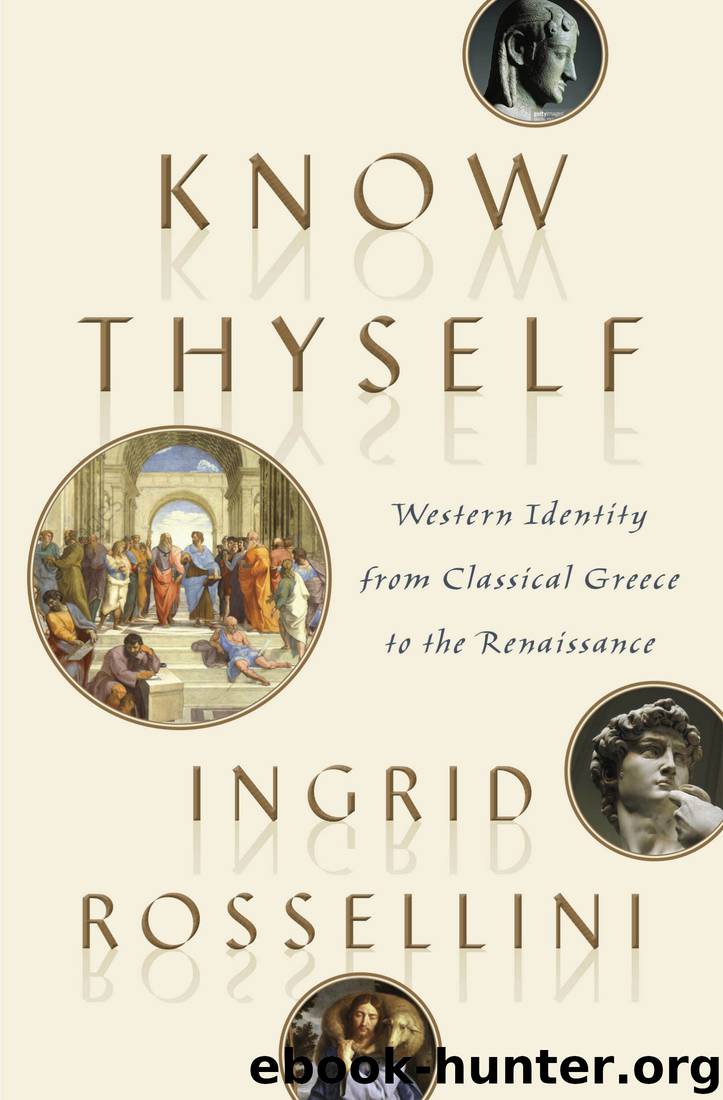Know Thyself: Western Identity From Classical Greece to the Renaissance by Ingrid Rossellini

Author:Ingrid Rossellini
Language: eng
Format: epub
Tags: Art, Civilization, History, Philosophy
Publisher: Doubleday
Published: 2018-05-15T03:00:00+00:00
Hagia Sophia, the emperor Justinian’s most magnificent and lasting achievement
Justinian was also famous for undertaking a comprehensive revision of the Roman law, which was codified with the name of Corpus iuris civilis, also known as the Code of Justinian (534). The statutory laws and legal decrees that the code included were also used by Justinian as a means to sanction the absolute quality of his authority. What pleased the emperor was turned immediately into law. If things went wrong, responsibility was readily and conveniently diverted toward the usual scapegoats—Jews, heretics, and homosexuals.
The emperor’s inflexible rule was reflected in the organization of a complex bureaucracy that proved particularly useful for the collection of taxes and fines, which Justinian enormously increased to finance the great amount of art he commissioned to lend grandeur to the capital of his empire. When the exasperated citizens, oppressed by the excessive taxes, staged a rebellion (known as the Nika uprising), the emperor resorted to violent means to repress the revolt. The bureaucracy that characterized the Byzantine government was also used by Justinian as a sophisticated espionage system through which to control the activity of his subjects.
To underscore the uniqueness of the emperor, complex norms of protocol and etiquette were developed, especially within the imperial palace, where ritualized behaviors, choreographed with theatrical flair, accompanied every moment of the ruler’s daily routine. To convey the impression that the emperor held a status that was almost supernatural, he was often lifted by mechanical means above visitors and court members, only to magically reappear dressed each time in a new rich and colorful costume. In his presence, everyone was forced to prostrate to the ground and kiss his silky slippers, while avoiding directly staring at his bigger-than-life persona. Reports of the time said that the emperor’s nobility was clearly revealed by the extraordinary quality of his demeanor: he never scratched or blew his nose in public, or spit or turned his head “here and there.” When a guest was ushered into the throne room, two mechanically activated lions roared, accompanied by a chorus of artificial birds perched on golden trees. The people who directly served the emperor were castrated eunuchs who could never pose a threat to the manly superiority of the emperor and to the purity of the empress. With their high-pitched voices, hairless bodies, and inability to procreate, the eunuchs were purposely altered to evoke, within the artificial paradise inhabited by the emperor, the pure presence of angels.
Because the mosaics that decorated the inner walls of Hagia Sophia were erased after the Ottoman Turks conquered Constantinople and turned the church into a mosque in 1543, the best way to have a sense of the pomp that surrounded the Byzantine court is to look at one of Italy’s most famous artistic jewels: the magnificent mosaic displayed in the Church of San Vitale in Ravenna that Justinian sponsored.
The mosaic depicts the celebration held by the emperor and his wife, Theodora, when the church was offered as a gift to the city to honor its protector, Saint Vitale.
Download
This site does not store any files on its server. We only index and link to content provided by other sites. Please contact the content providers to delete copyright contents if any and email us, we'll remove relevant links or contents immediately.
| Anthropology | Archaeology |
| Philosophy | Politics & Government |
| Social Sciences | Sociology |
| Women's Studies |
The remains of the day by Kazuo Ishiguro(8399)
Tools of Titans by Timothy Ferriss(7818)
Giovanni's Room by James Baldwin(6814)
The Black Swan by Nassim Nicholas Taleb(6772)
Inner Engineering: A Yogi's Guide to Joy by Sadhguru(6444)
The Way of Zen by Alan W. Watts(6290)
Asking the Right Questions: A Guide to Critical Thinking by M. Neil Browne & Stuart M. Keeley(5358)
The Power of Now: A Guide to Spiritual Enlightenment by Eckhart Tolle(5338)
The Six Wives Of Henry VIII (WOMEN IN HISTORY) by Fraser Antonia(5240)
Astrophysics for People in a Hurry by Neil DeGrasse Tyson(5003)
12 Rules for Life by Jordan B. Peterson(4165)
Housekeeping by Marilynne Robinson(4069)
The Ethical Slut by Janet W. Hardy(4041)
Skin in the Game by Nassim Nicholas Taleb(3973)
Double Down (Diary of a Wimpy Kid Book 11) by Jeff Kinney(3932)
Ikigai by Héctor García & Francesc Miralles(3899)
The Art of Happiness by The Dalai Lama(3850)
Skin in the Game: Hidden Asymmetries in Daily Life by Nassim Nicholas Taleb(3729)
Walking by Henry David Thoreau(3685)
